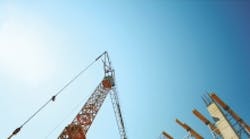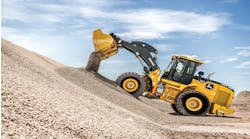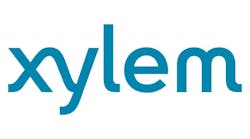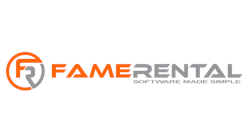Rental is the Cornerstone: Rental Strategy is Key to Dealer and OEM Profitability
In the mid 1960’s, my father was introduced to the rental industry while working as a jobsite salesman for a scaffolding company. During the next 10 years he worked for two other rental companies in the area before deciding to go into business for himself. The year was 1973 and the place was Jacksonville, Fla.
At the time there were four rental companies that catered to the professional contractor. Although renting equipment was not a new idea, most contractors thought of renting equipment when they needed to handle peak periods of demand or when their machine was being repaired. Occasionally they needed a specialized machine for just a short period of time and renting would be ideal, but most rental fleets stayed away from anything too exotic.
Most all of the major brands of equipment such as Caterpillar, John Deere, J.I. Case, Bobcat and Massey Ferguson had a presence in the local market. There were also industrial supply companies that carried specialized construction products and occasionally rented a few machines such as screeds, conveyors and some concrete tools. The focus was clearly not about renting equipment to make money but rather a means to promote sales through a paid “demo.”
I didn’t recognize at the time, since we were not in the business of selling new equipment and didn’t have a fancy location, a professional sales staff or an authorized territory, but we were in the distribution business also. It sure didn’t seem like it at the time. I think we felt more like Sanford and Son compared to equipment dealers. We were unsophisticated but highly motivated. What we did have going for us at the time was our customers liked us and our competitors didn’t seem to recognize our existence.
We opened an hour earlier than any of our competitors; we stayed later than any of our competitors and offered faster delivery services. Talking with customers that came in the store, we learned that they didn’t like making multiple stops to pick-up supplies. This led to us developing a one-stop shop approach to serving our customers. It was actually quite easy. What they wanted was convenience and reliability. Our scope of products and services were driven in large part by traditional dealers that were not interested in trying to adapt to a changing environment.
Remember this is the 1970’s and 80’s, no such thing as the big box hardware stores. Existing supply companies did not open generally before 8 a.m. and many of them would not handle cash transactions. Our business opened at 7 a.m. and we cornered the market on construction supplies for at least one hour per day.
Rental Begins to Emerge
Our products and services matured over the coming years to be recognized as a leader within the market, competitive with those dealers that seemed so formidable just 15 years prior. Some of them went out of business along the way. We opened a second location. Looking back now, we were truly marketing our business every day. We were talking with customers who gave immediate feedback and were learning how to “repackage” construction equipment and services in new ways that contractors wanted to use them. Some of most successful entrepreneur’s I’ve ever met in the rental industry are those that intentionally created a process for hearing the voice of the customer and could process the feedback quickly, make adjustments and take advantage of new opportunities.
Being an independent rental company has its advantages. We were never constrained by “authorized” sales territory, product scope or brand allegiance. We focused on customers and catering to their needs.
From my perspective, traditional equipment dealers slept through the mid 70’s and most of the 80’s. They preferred selling to rental companies and let them handle all the risks associated with smaller contractors and the daily, weekly transactions. Meanwhile these unprofessional, unsophisticated rental companies were building long-term relationships with customers and learning new ways to engage them. Contractors were recognizing this new breed of equipment “distributor” that was much more focused on service and less on name brand machinery. Customers that were renting a backhoe were not concerned about the brand of the machine, features and benefits, or warranty program…they were focused on digging a hole.
Dealers were having a hard time understanding that the decision-making process for a contractor renting a machine was entirely different than if they were making a purchase. As the market was maturing, contractors were learning they could not only rely on rental equipment for their secondary needs and emergencies, but they could trust rental equipment as their primary method of sourcing machines. Rental companies were gaining control of the customers every day.
Dealers in my area began to get serious about renting equipment about the time the Federal Investment Tax credit came to an end. Up until 1986, a 10-percent tax credit was available to business owners on capital investments. Contractors would typically make end-of-year purchases knowing that the government was subsidizing the purchase price. This was an easy windfall for dealers. When this ended, contractors were less likely to make marginal purchases. This had direct impact on sales revenues, which caused dealers to look for new ways to make up the difference. Instead of passing along a rental lead to their favorite local rental house, they became interested in pursuing the deal themselves and became a new competitor in the market.
During the 1990’s the industry saw more focus and attention being given to this emerging rental business. Atlas Copco purchased Prime Equipment, which we all assumed would lead to Sullair compressors being moved to the curb as one of Prime’s leading suppliers. Why else would a major manufacturer be interested in a network of rental stores with such a diverse product mix? The footprint of Prime locations could potentially be the new distribution channel for Atlas Copco compressors and tools.
But it never happened. It did, however, establish a new benchmark for rental stores valuations at the time. The ownership period for Atlas Copco was short lived and they eventually sold to RSC.
Probably the most profound impact to the rental industry was the consolidation movement that began during the mid to late 90’s and the formation of United Rentals. Who could have ever imagined that this mom and pop, unprofessional, unsophisticated Sanford and Son rental business could be consolidated into a publicly traded company with more than 750 locations and a corporate branding strategy focused on the services rather than a machine brand.
Near the end of the decade, Caterpillar began rolling out a global strategy for CAT-branded rental stores owned and operated through their existing dealer network. It was a strategy to get closer to the smaller contractor through the delivery of their compact equipment. Yet another confirmation that market conditions are changing and dealers need to adapt. Not all types of equipment are best suited for the traditional sales and service model, as a high percentage of compact equipment finds its way into the market through rental fleets.
Channel to Market Options
Original Equipment Manufacturers (OEMs) today are under great pressure to deliver on profit projections and market share. Every quarter they must face the investment community and are either rewarded or penalized for their performance. As equipment dealers today struggle with profitability, capitalization, cash-flow and even succession planning, the OEMs they represent are at risk with losing market share or even a presence in the local market. Dealers are watching their once-protected territories being assaulted from every angle. Global competitors, declining sales margins and shrinking markets are tough hurdles to overcome while trying to make a profit. Smart manufacturers are those that have a balanced approach to channel distribution so they are not as vulnerable to economic pressures.Channel delivery options being used today:
- Stand-alone dealers
- Bolt-on dealers
- National rental companies
- Smaller privately held rental companies
- OEM direct selling through company retail outlets
- Factory-direct sales
- Franchise programs
While each of these options have various pros and cons, some giving the OEMs more control and security than others, without channel control the OEMs are always at risk with losing market share as consolidation will continue to take place, and some brands are going to be tossed to the curb. When it gets down to one brand being equal to another in terms of product quality and scope, the more profitable brand is likely to stick.
CONTINUE
Channel Partners need to be Financially Sound
Dealer principals from the 60s and 70s were often dyed in the wool equipment salesmen and loved the business they were in. They were not comparing Return on Equity (ROE) against other types of investments. The economic world we live in today is much different. Investors are more sophisticated and have options where to deploy and put capital at risk. I believe the biggest challenge for OEMs today is to attract new capital into the distribution channel. If they are not successful then they will have to fund the growth themselves.
During the past two years we have watched a global manufacturer, Volvo and its Volvo Rents division abandon their efforts to franchise rental stores and are now building their own private network. As of August 2012, they have about 120 locations in the U.S. market. The looming question is why would they want to be in the retail rental business? One good reason might be for channel control as we recently witnessed the consolidation of United Rentals and Rental Service Corp. If you happened to be a preferred vendor to RSC and not to United you potentially just lost distribution through 400+ stores. The distribution channel is trending smaller giving OEMs fewer options. They should be asking themselves a few serious questions:
• Is our dealer business model still valid in light of the economy? Is it sustainable into the future?
• Is the operational and financial benchmarking we use still valid?
• Can we materially demonstrate to our dealers how to make money with our product line?
• What is the capital investment we expect a new distributor to make?
• How long will it take to at least break even on the initial invested cash?
• What is the Return on Equity that we would expect a new dealer to make?
Manufacturers’ entering new markets have a high-risk business proposition that has a few flaws but they are still asking investors to take the plunge. The odds in many cases are stacked against the start-up enterprise. There is usually a lack of brand awareness and the product is unproven. The traditional business model of sales, parts and service is heavily weighted on the parts and service margins and without significant machine population in the new territory, the new dealer cannot achieve profitability as the gross sales margins won’t support it. Established brands such as Caterpillar, John Deere and Bobcat were fortunate enough to have built strong dealer networks prior to the 1980’s. They have done well with this traditional business model, which has been very difficult for others to replicate during the past 20 years.
The fact is if distribution was profitable and easy, then investors would be lined up for the next opportunity to become a construction equipment dealer. Trying to get a dealership started from scratch or trying to enter a mature market is even greater risk. Pioneering a new brand can easily take seven to 10 years and is an expensive endeavor.
The new distributor model…four legs not three!
- NEW MACHINE SALES - the past decade has seen gross sales margins on new machines erode from around 15 percent to an average now around 13 percent. That means a dealer needs to sell more to make the same contribution to gross profit. The recession has caused many contractors to be stuck making machine payments when they had no work, while others lost significant equity in their fleet as a result of falling used equipment prices. Going forward, expect customers to be conservative in their buying habits and averse to assuming financial risk.
- USED MACHINE SALES – gross margins on used machines have always been more lucrative than new machines, often times double. To stay competitive dealers need a steady source of used machine sales not only for the contribution to profit, but also to defend their territory against competitive products. These used machines need to be aged and priced to meet local market demand.
- PARTS AND SERVICE - is still the backbone of a strong dealer, however some products these days don’t consume a lot of parts. Generators and air compressors will never have the parts and service volume like ground-engaging machines such as dozers and excavators. Depending on the products being sold, it could be that generating profits through parts and service will never be an opportunity. Without the high-gross margins created through parts and service, where does the sales volume and profitability come from?
- RENTAL - Equipment dealers over the past 15 to 20 years have reluctantly been involved in rental. They have responded to market demand by renting machines for shorter periods of time. However they generally fail to see rental as a strategic part of their marketing and contribution to profitability. Rental for them is an interim step to a sale.
Revenue Mix is Key
Manufacturers can help educate their dealers to be focused on gross margins, and not be fooled by gross revenue. Revenue without margins is useless. Dealers need to be focused on “engineering” their targeted margin. Being intentional about their revenue mix is the pathway to profits. Rental fleets do not occur by chance, they are the result of someone assuming a calculated financial risk on behalf of the customers they intend to serve. As was stated earlier, equipment dealers have somewhat waded into the rental market and have not made it part of their overall marketing strategy. A dealers’ rental revenue will not evolve much past 12 to 15 percent of the overall sales unless it is a foundational strategy of the company. This requires vision, capitalization and implementation. AED distributors that have rental revenues of more than 15 percent of total sales have a higher gross profit margin than those with little or no rental activity.
External forces are having significant impact on the distribution channel today and must be recognized and incorporated into the new business model. For instance the Internet allows customers to buy from literally anywhere on the planet and therefore circumvent the dealer-protected territory. Customers can buy used equipment online. Customers can do comparative shopping and apply for financing online. These are all things that dealers used to add value to the transaction. The auction business has matured over the past 20 years and no longer is it a “foreclosure” looking machine but rather professional including online bidding, and financing available online. Equipment dealers no longer have the control of the used machine market. Technology and marketing have enabled auction companies to reposition themselves from junk dealers to formidable international distributors of equipment.
OEMs need to see Rental as Strategic
Benefits for manufacturers that position themselves in the rental channel include:
• Acceleration market penetration
• Factory can deduce floor plans – instead finance rental fleets
• Accelerate dealer payments - rental fleets create cash flow that can pay down dealer debt
• Contractors will have “low risk” method to try out new brand or product
• Dealer rental fleet grow the used machines that will help seed the market for parts and service
• Increases dealer profitability
• Reduces the overall business risk for the new channel partner
• Rental allows customers with marginal credit scores to get introduced to product
• Rental becomes the “paid demo” eliminating new machines being put into service unnecessarily
• Rental provides the new dealers a service platform to engage customers demonstrating their abilities prior to selling the customer a machine
Equipment Dealers need to see Rental as Strategic
Distribution Cornerstone - Rental increases the flow of equipment into the market by lowering the customers “risk” factor. Offering short-term rentals is really “repackaging” existing products to attract more customers and change their buying habits. Rental tends to open up markets where sales have been slow, and increase market penetration where sales are brisk.
Manufacturing – The byproduct of an active rental fleet is an inventory of well-maintained, low-hour, used machines that have great marketability and high profit potential. Used equipment helps protect the local machine population and sets up future parts and service revenues.
Marketing - Rental can be one of the most effective marketing tools ever associated with a traditional equipment dealer. Offering easier access to equipment that before might have been prohibitive, is now less intimidating facilities that are more conveniently located will attract new customers at an unprecedented rate.
Partnering - Rental is not a one-time event, but rather a long-term relationship serving customers. Presenting rental to your customers should be thought of as educating your customers to better manage their equipment requirements through “outsourcing.” Rental offers customers efficient use of financial capital as well as human resources in service and support.
Profits - Rental produces profits. Compared to the sales business, the rental business can be substantially more profitable, generally as much as 2-3 times higher. At the appropriate time when the rental fleet is “turned,” it will generate much higher profit margins than if you were selling the equipment new.
Relationships - Customers have daily and weekly equipment needs. This means multiple opportunities for contact each week. Frequent interactions provide the opportunity to know the customer. People generally enjoy doing business with people they know.
Service - Rental is all about service — your ability to service the needs of your customer by assuming the financial risk, the logistics headaches and the ongoing maintenance and repair aspects of fleet ownership. You are selling them convenience.
The traditional business model of sales, parts and service has been under pressure over the past 10 years but a thriving economy covered those flaws. The economic recession has exposed the weaknesses and OEMs must reshape the dealer business model if they want channel partners to stay engaged. Economic uncertainty is the friend of rental. Rental should be recognized as a strategic solution for everyone involved. It’s good for the OEM, good for the dealers and good for the contractor, truly a cornerstone for future distribution.
Larry Kaye is President of Script International, which provides consulting services to manufacturers, dealers and rental companies domestically and internationally. His rental experience spans more than 30 years, which includes twice selling to consolidators, helping start-up rental operations in Latin America and also serving on the ARA Board of Directors.






